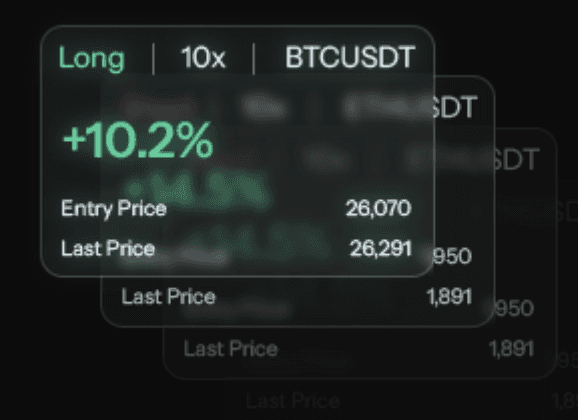The Art of Trading Tactics
Oct 15, 2023
Many traders believe that there are extremely complicated step or rules to follow when it comes down to trading. That's completely false! By critically thinking and with decent amount of observation, you can be quite successful. Do note, none of the below are financial advice.
Questions to Ask Yourself
There are always certain questions to ask yourself when analyzing the markets. It helps you narrow down what and where to look for.
What is the direction of the overall market? Bullish or bearish?
What are the charts at different time frames (preferably weekly and monthly) showing?
Where are the important support and resistance levels?
What do you notice with the trend lines?
Are there any major reversal patterns and continuation patterns visible?
Are there overbought or oversold signals? See the oscillators.
Do you notice any divergences?
Though a bit tricky, do you spot Fibonacci retracements?
Have you noticed any cycles?
And so many more.
We need to be able to determine to differentiate between the noise and music. Hence, incorporating both technical and fundamental analysis is the way to go. Just looking at the technical factors is definitely okay but taking in fundamental factors boosts your trading strategy immensely.
Trading Tactics
These are tactics that one can use for guidance and can take inspiration from.
Timing the market by using technical analysis. This is a technical no brainer. As technical indicators are mathematical calculations based on historic price data, you are mathematically more accurate in predicting the timing.
Are you feeling or thinking? Most of the time, we get rather emotional resulting in a position caused by reaction. This differs from our original purpose which is anticipating the market. Getting too giddy can be your huge drawback. Try to not overly panic when the markets don't go the way you expect it to.
Spotting early entry or exit signals. Using multiple indicators or specific ones to spot early entry/exit signals can quickly give you an edge.
Understanding the importance of support and resistance levels. Though yes you may use s/r indicators often, never underestimate its power!
Fibonacci percentage retracements indicate signs of pullbacks. Certain percentages of pullback after for instance a bullish breakout, may indicate a great buying point. Same does when spotting great shorting opportunities.
Combining multiple indicators. As constantly recommended, there is a strong reason behind this. It is due to the reason of being the most effective way to fine tuning the entry or exit point and even for improved accuracy.
All in all, there are lots to play around with. Keep trading more consistently, in turn giving you the eye to quickly analyze and spot. It takes practice and dedication. But with useful points and helpful guidance, you're on your way in making big in trading! Stay safe and happy trading!

The Art of Trading Tactics
Oct 15, 2023
Many traders believe that there are extremely complicated step or rules to follow when it comes down to trading. That's completely false! By critically thinking and with decent amount of observation, you can be quite successful. Do note, none of the below are financial advice.
Questions to Ask Yourself
There are always certain questions to ask yourself when analyzing the markets. It helps you narrow down what and where to look for.
What is the direction of the overall market? Bullish or bearish?
What are the charts at different time frames (preferably weekly and monthly) showing?
Where are the important support and resistance levels?
What do you notice with the trend lines?
Are there any major reversal patterns and continuation patterns visible?
Are there overbought or oversold signals? See the oscillators.
Do you notice any divergences?
Though a bit tricky, do you spot Fibonacci retracements?
Have you noticed any cycles?
And so many more.
We need to be able to determine to differentiate between the noise and music. Hence, incorporating both technical and fundamental analysis is the way to go. Just looking at the technical factors is definitely okay but taking in fundamental factors boosts your trading strategy immensely.
Trading Tactics
These are tactics that one can use for guidance and can take inspiration from.
Timing the market by using technical analysis. This is a technical no brainer. As technical indicators are mathematical calculations based on historic price data, you are mathematically more accurate in predicting the timing.
Are you feeling or thinking? Most of the time, we get rather emotional resulting in a position caused by reaction. This differs from our original purpose which is anticipating the market. Getting too giddy can be your huge drawback. Try to not overly panic when the markets don't go the way you expect it to.
Spotting early entry or exit signals. Using multiple indicators or specific ones to spot early entry/exit signals can quickly give you an edge.
Understanding the importance of support and resistance levels. Though yes you may use s/r indicators often, never underestimate its power!
Fibonacci percentage retracements indicate signs of pullbacks. Certain percentages of pullback after for instance a bullish breakout, may indicate a great buying point. Same does when spotting great shorting opportunities.
Combining multiple indicators. As constantly recommended, there is a strong reason behind this. It is due to the reason of being the most effective way to fine tuning the entry or exit point and even for improved accuracy.
All in all, there are lots to play around with. Keep trading more consistently, in turn giving you the eye to quickly analyze and spot. It takes practice and dedication. But with useful points and helpful guidance, you're on your way in making big in trading! Stay safe and happy trading!

The Art of Trading Tactics
Oct 15, 2023
Many traders believe that there are extremely complicated step or rules to follow when it comes down to trading. That's completely false! By critically thinking and with decent amount of observation, you can be quite successful. Do note, none of the below are financial advice.
Questions to Ask Yourself
There are always certain questions to ask yourself when analyzing the markets. It helps you narrow down what and where to look for.
What is the direction of the overall market? Bullish or bearish?
What are the charts at different time frames (preferably weekly and monthly) showing?
Where are the important support and resistance levels?
What do you notice with the trend lines?
Are there any major reversal patterns and continuation patterns visible?
Are there overbought or oversold signals? See the oscillators.
Do you notice any divergences?
Though a bit tricky, do you spot Fibonacci retracements?
Have you noticed any cycles?
And so many more.
We need to be able to determine to differentiate between the noise and music. Hence, incorporating both technical and fundamental analysis is the way to go. Just looking at the technical factors is definitely okay but taking in fundamental factors boosts your trading strategy immensely.
Trading Tactics
These are tactics that one can use for guidance and can take inspiration from.
Timing the market by using technical analysis. This is a technical no brainer. As technical indicators are mathematical calculations based on historic price data, you are mathematically more accurate in predicting the timing.
Are you feeling or thinking? Most of the time, we get rather emotional resulting in a position caused by reaction. This differs from our original purpose which is anticipating the market. Getting too giddy can be your huge drawback. Try to not overly panic when the markets don't go the way you expect it to.
Spotting early entry or exit signals. Using multiple indicators or specific ones to spot early entry/exit signals can quickly give you an edge.
Understanding the importance of support and resistance levels. Though yes you may use s/r indicators often, never underestimate its power!
Fibonacci percentage retracements indicate signs of pullbacks. Certain percentages of pullback after for instance a bullish breakout, may indicate a great buying point. Same does when spotting great shorting opportunities.
Combining multiple indicators. As constantly recommended, there is a strong reason behind this. It is due to the reason of being the most effective way to fine tuning the entry or exit point and even for improved accuracy.
All in all, there are lots to play around with. Keep trading more consistently, in turn giving you the eye to quickly analyze and spot. It takes practice and dedication. But with useful points and helpful guidance, you're on your way in making big in trading! Stay safe and happy trading!

Supercharge your trading game with Market Mapper today!




